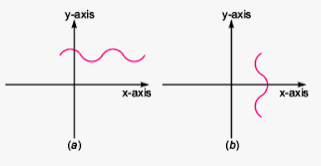Let A=R×R and * be a binary operation on A defined by : (a,b) * (c,d) = (A+c,b+d).Showtˆ⋅iscomμtativeandassociative.F∈dthentitye≤mentfor⋅onA.Alsof∈dthe∈verseofeverye≤ment(a,b)inA.Solution in Punjabi
Step by step video & image solution for Let A = R xx R and * be a binary operation on A defined by : (a,b) * (c,d) = (A+c,b+d). Show that * is commutative and associative. Find the identity element for * on A. Also find the inverse of every element (a,b) inA. by Maths experts to help you in doubts & scoring excellent marks in Class 12 exams.
Updated on:21/07/2023Topper's Solved these Questions
- RELATIONS AND FUNCTIONBOOK - MODERN PUBLICATIONCHAPTER - RELATIONS AND FUNCTIONEXERCISE - EXAMPLE
212 Videos
- PROBABILITYBOOK - MODERN PUBLICATIONCHAPTER - PROBABILITYEXERCISE - EXERCISE
543 Videos
- RELATIONS AND FUNCTIONSBOOK - MODERN PUBLICATIONCHAPTER - RELATIONS AND FUNCTIONSEXERCISE - EXAMPLE
13 Videos
Similar Questions
Which one of the following graph represents the function of x? Why?

View SolutionCompute P(A∣B),if P(B)=0.5 and P(A∩B)=0.32
View SolutionState the reason for the relation R, in the set {1,2,3} given by R= {(1,2), (2, 1), not to be transitive.
View SolutionLet A = N×N and ⋅ be the binary operation on A defined by(a, b) ∗(c, d) = (a + c, b + d) . Show that ⋅ is commutative and associative. Find the identity element for ⋅ on A, if any.
View SolutionLet A = R × R and * be the binary operation on A defined by (a, b) * (c, d) = (a + c, b + d). Show that * is commutative and associative. Find the identity element for * on A.
View Solutionमाना कि A=N×N है तथा A में (a,b)∗(c,d)=(a+c,b+d) द्वारा परिभाषित एक द्विआधारी संक्रिया ∗ है। सिद्ध कीजिए कि ∗ क्रमविनिमेय तथा साहचर्य है। A में ∗ का तत्समक अवयव यदि कोई है, तो ज्ञात कीजिए।
View SolutionLet A=N×Nand∗ be the binary opertion on A defined by
(a,b)∗(c,d)=(a+c,b+d)
Show that ∗ is commutative and associative. Find the identity element for ∗ on A, if any.
View SolutionLet A=N×Nand∗ be the binary operation on A defined by
(a,b)∗(c,d)=(a+c,b+d)
Show that ∗ is commutative and associative. Find the identity element for ∗ on A, if any.
View SolutionLet A=N×Nand∗ be the binary opertion on A defined by
(a,b)∗(c,d)=(a+c,b+d)
Show that ∗ is commutative and associative. Find the identity element for ∗ on A, if any.
View SolutionLet A = N×N and ⋅ be the binary operation on A defined by(a, b) ⋅(c, d) = (a + c, b + d) . Show that ⋅ is commutative and associative. Find the identity element for ⋅ on A, if any.
View SolutionLet A = R × R and * be the binary operation on A defined by (a, b) * (c, d) = (a + c, b + d). Show that * is commutative and associative. Find the identity element for * on A.
View SolutionLet A = R × R and * be the binary operation on A defined by (a, b) * (c, d) = (a+c,b+d). Show that * is commutative and associative. Find the identity element for * on A.
View SolutionL A=N×Nand∗ be the binary operation on A defined by (a,b)*(c,d)=(a+c,b+d) Show that ∗ is commutative and associative . Find the identity element for ∗ on A , if any.
View Solution∗ be binary operation defined on a set R by a∗b=a+b−(ab)2. Show that ∗ is commutative, but it is not associative. Find the identity element for ∗.
View Solutionमाना कि A=R×R है और ∗, A में (a,b)∗(c,d)=(a+c,b+d) द्वारा परिभाषित एक द्विआधारी संक्रिया है। दर्शाइए कि ∗ क्रम विनिमय तथा साहचर्य है A में ∗ तत्समक अवयव ज्ञात कीजिए | A के प्रत्येक अवयव (a,b)∈A का प्रतिलोम भी ज्ञात कीजिए।
View SolutionLet A = N×N and ⋅ be the binary operation on A defined by (a, b) ⋅(c, d) = (a + c, b + d) . Show that ⋅ is commutative and associative. Find the identity element for ⋅ on A, if any.
View Solution
